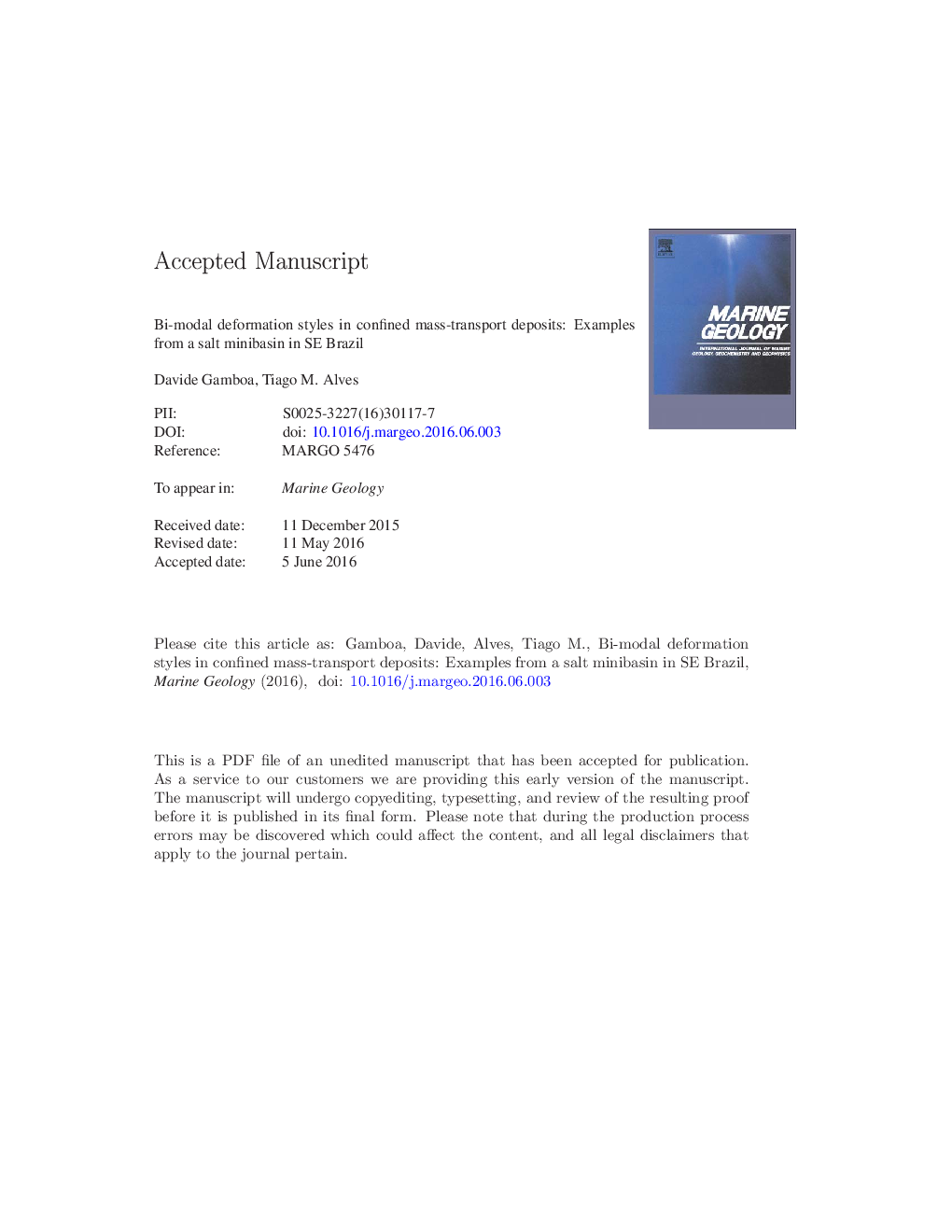| Article ID | Journal | Published Year | Pages | File Type |
|---|---|---|---|---|
| 6441370 | Marine Geology | 2016 | 48 Pages |
Abstract
High-quality 3D seismic data reveal bi-modal deformation styles in mass-transport deposits filling a salt minibasin in SE Brazil (EspÃrito Santo Basin). We analyse three mass-transport deposits within the same Miocene stratigraphic interval, and four others in Holocene strata. Our interpretation reveals that deformation in the mass-transport deposits relates to their long-axis orientation. As a result, they are divided into two types: a) Type 1 have long axes parallel to the direction of movement and show significant internal deformation; b) Type 2 have long axes perpendicular to the direction of movement, are highly heterogeneous and include large undeformed slabs. The long axes of Type 2 mass-transport deposits are parallel to the strike of bounding faults and salt structures. The majority of mass-transport deposits show intense deformation at their headwalls, and relative short remobilisation distances are inferred for both Types 1 and 2. In the study area, the timing of emplacement of mass-transport deposits was controlled by the growth of adjacent salt ridges. Earlier halokinesis in the northern axial areas of the minibasin shifted southwards in a second stage. Holocene mass-transport deposits suggest alternating growth of the eastern and western salt ridges. Our results show that detailed seismic-stratigraphic analyses are a key to understanding the timings and magnitude of deformation of mass-transport deposits in salt minibasins. The classification proposed can be applied to MTDs on continental margins and in lacustrine settings.
Related Topics
Physical Sciences and Engineering
Earth and Planetary Sciences
Geochemistry and Petrology
Authors
Davide Gamboa, Tiago M. Alves,
